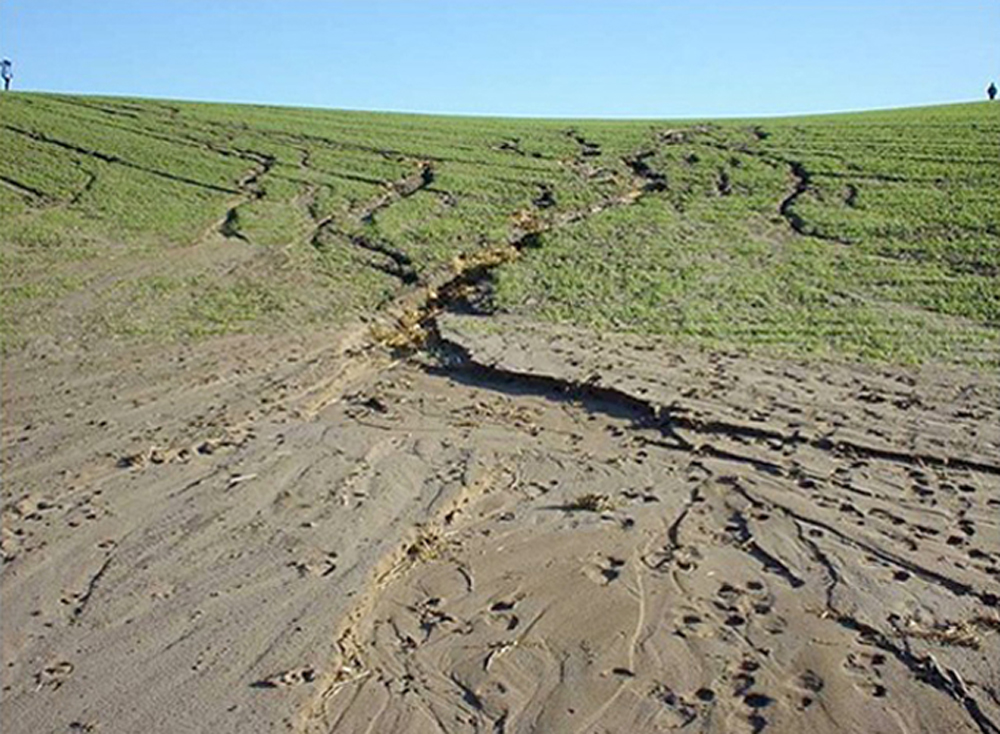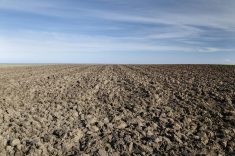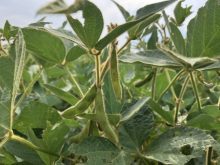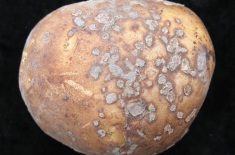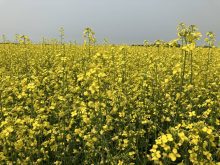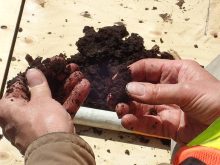We’ve all had those moments when we realize what we do most of the time matters more than what we attempt once in a while.
One of those light bulbs snapped on for Ryan Canart while sitting at a soil health conference in Alberta awhile back.
The district manager for the Upper Assiniboine River Conservation District was listening to speaker Jay Fuhrer, a Bismark, N.D.-based soil health specialist, talk about degraded soil health as the underlying reason for many of our watershed challenges from flooding to water quality and soil erosion.
Read Also

Manitoba sclerotinia picture mixed for 2025
Variations in weather and crop development in this year’s Manitoba canola fields make blanket sclerotinia outlooks hard to pin down
“I had a kind of ‘aha’ moment,” said Canart. Instead of focusing so much attention on cleaning out drains and building water control structures which are symptoms of the problem we should, as this speaker was saying, focus on the root of the matter, he realized.
“I think where we are today we’re still treating the symptoms,” he told the Brandon assembly of other CD managers, landowners and municipal leaders.
“It’s way more expensive and there’s not nearly the benefits. If we can get to solving the problem that’s where we need to go.”
That conference and other influential soil health specialists he’s met have helped him see solving the problem requires finding ways to reduce soil disturbance, that lays ground bare and destroying the habitat for soil micro-organisms.
By placing more emphasis on soil health, and building the biology back into it through minimizing soil disturbance, maximizing plant diversity through crop rotation, using cover crops to keep living roots in soil, and integrating livestock back into our production systems, we could be tackling that bigger problem, says Canart.
“I think if we kind of step back and mimic what Mother Nature is doing and incorporate some of that into our annual farming practices we’d be better for it,” he said.
In a land and water course he teaches to high school students he uses the illustration of a single raindrop hitting the ground as the beginning of erosion, because water dislodges soil particles.
“We can put something between a raindrop and the soil to reduce that.
“We want to leave that soil undisturbed as much as possible, to allow the biology and especially the earthworms to create those soil aggregates that allow the water to get in.”
Their CD is an area of over 2,200 sq. miles with surface drainage flows generally to the southeast, through various minor rivers and streams. It’s a landscape dotted with potholes and large swathes of prairie grassland.
“We do have erosion,” Canart said in Brandon, sharing a photo of an eroded gully in the Rossburn area.
“We’ve tried to address this with a grassed runway,” he said. “But we realized on slopes of over six per cent that grass probably won’t do the job. The story is in the background.”
Tree cover had been removed and with the roots gone there was nothing left to keep the soil from washing away.
In an article recently published in MCDA’s annual magazine The Current, which he titled ‘A Tale of Two Soils,’ Canart uses a photo he took of a demonstration Fuhrer did, showing the comparative capacity of soil samples to hold water. One sample, taken from a North Dakota site came from soil repeatedly tilled, with low crop diversity, no cover crops and void of animal integration. It lost all structural integrity after only seconds in the water. In contrast, another sample from land receiving minimal disturbance and retaining high organic content absorbed water but remained undissolved even after 48 hours.
Canart said he wishes he was able to do a soil benchmarking study in Manitoba, adding his hunch tells him most Manitoba soil is likely in better health.
“If organic matter is the underlying piece of watershed health, we should maybe be benchmarking soils around our watershed to direct our funding to the most at-risk soils,” he said.
Upper Assiniboine River Conservation District has recently begun working with five producers in the Rossburn and Kenton areas on small-acre plots to test, pilot, measure and monitor how reducing tillage, use of diverse crop rotations and incorporating livestock in their production systems can help boost their soils’ organic content and improve the soil’s water infiltration.
These will be five-year projects whose ultimate aim is to increase soil health while having these farmers decide how it affects their bottom line, Canart said.






